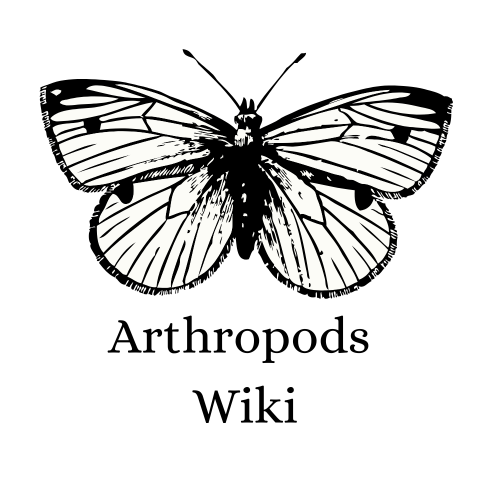(work in progress)
Preparing insects consists of a method to stop decay and guarantee a permanent specimen, labeling this specimen correctly, and then keeping it under conditions where museum beetles and other scavengers have no access and the passage of time will have minimal effects on the specimen.
There are several methods to stop decay. Dehydration (drying) is the commonest used. Because a dried insect is the most fragile of objects, something must be done to ensure that handling a specimen after drying remains possible. This is the purpose of an insect pin. Large insects are usually pinned, smaller ones are mounted on points. Very fragile, soft-bodied insects are kept in alcohol. Very small insects are usually put on a microscope slide. The preferred method depends on the order or family, and to some slight extent on the preference of the collector.
Mounting on pins[]
The (killed and relaxed) insect is now pierced with a pin starting in the back, in a place which is dictated by convention. Beetles, for instance, are pinned through the right elytrum, between the 2nd and 3rd leg, just to the side of the midline.
In all cases the animal should sit squarely on the pin, not tilted right or left, nor up nor down. A number 2 pin is the most frequently used. Thicker (3,4,5,6,7) and thinner (1,0,00,000) pins exist but the thicker pins do more damage to the specimen and the thinner ones bend too easily when placing the specimen in a drawer. Common sewing pins are not suitable, they are too short and too thick.
Keep about 12 mm of the pin above the specimen so you can still handle it. Now push the pin with the insect in a slab of foam until the legs of your specimen touch the floor. Now use ordinary pins to fix the legs of the specimen in a natural position, the front legs to the front, the second and third legs pointing to the back. Don't let them stick out too much to the side, the specimen will be more vulnerable. The antennae should also be extended and kept in place with pins.
Now let the insect dry, This will take a couple of days to a couple of weeks. Keep the collection info with the specimen at all times to prevent loss of information.
mounting on points[]
spreading and mounting butterflies[]
glueing on cards[]
for beetles, especially popular in Europe.
preserving in alcohol[]
making a microscope slide[]
labeling a specimen[]
To have any scientific value at all, a specimen must be labeled with the place where it was found, the date it was found, and the name of the collector. This label must be affixed to the specimen, e.g. stuck on the slide, pinned on the same pin as the specimen, or included in the bottle with alcohol. Catalogs containing the data of merely numbered specimens wil get lost or mislaid, harddisks will crash.
The place starts with the country, nearest large town, and distance and direction from this. The date is given as dd.mm.yyyy. The month is stated in roman numerals to prevent confusion between US and European ways of writing dates (9-11-2002 vs 11-9-2002). The collector is given with initials and last name. Geographic coordinates for the place are acceptable as long as the place where the animal was collected can be confidently reconstructed, be it tomorrow or a hundred years hence. Ideally a bit more information should be included, like the plant it was found on, or the height it was found at if in the mountains. The label should be as small as possible, e.g. 14 x 22 mm as space in insect pin drawers is always at a premium. Laser printers can print 4- or 5 point fonts which give excellent results. Use thickish, sturdy acid-free paper that will not turn yellow or crumble in a decade or two, or a century. You wil spend 5-10 minutes of your valuable time for each specimen just putting it on the pin and wrting the label. Don't save on the one or two pence that are the difference between a good quality no-rust pin and a cheap bad one, or between common writing paper and paper that will withstand the centuries! Use permanent ink, India ink if writing with a pen.
example of a label:
NL Kampen SE 3km 19.IV.2007 E van Herk on hedera helix
Perhaps unexpectedly, the name of the insect is not of great importance: names are hard to determine, the specimen is its own identification, and names change with time and with the progress of taxonomy. A name label should be put separately and below the specimen label on the pin. The person who made the determination should be included on the label.
